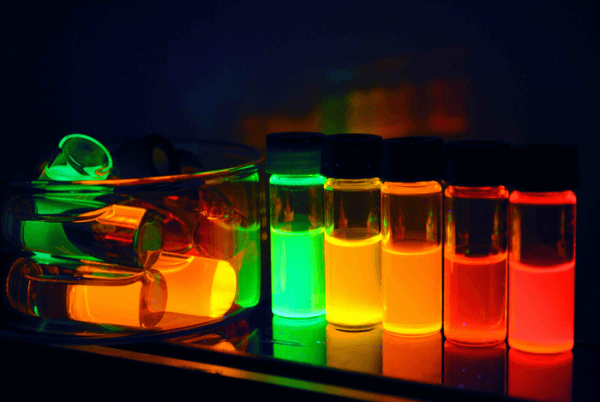A new article in Science magazine gives an overview of almost three decades of research into colloidal quantum dots, assesses the technological progress for these nanometer-sized specs of semiconductor matter, and weighs the remaining challenges on the path to widespread commercialization for this promising technology with applications in everything from TVs to highly efficient sunlight collectors.
“Thirty years ago, these structures were just a subject of scientific curiosity studied by a small group of enthusiasts. Over the years, quantum dots have become industrial-grade materials exploited in a range of traditional and emerging technologies, some of which have already found their way into commercial markets,” said Victor I. Klimov, a coauthor of the paper and leader of the team conducting quantum dot research at Los Alamos National Laboratory.
Many advances described in the Science article originated at Los Alamos, including the first demonstration of colloidal quantum dot lasing, the discovery of carrier multiplication, pioneering research into quantum dot light emitting diodes (LEDs) and luminescent solar concentrators, and recent studies of single-dot quantum emitters.
Using modern colloidal chemistry, the dimensions and internal structure of quantum dots can be manipulated with near-atomic precision, which allows for highly accurate control of their physical properties and thereby behaviors in practical devices.
Read more at DOE/Los Alamos National Laboratory
Image: The tiny specs of matter called quantum dots can be tuned to emit light in specific wavelengths. That’s just one quality that makes them valuable in a range of technology applications (Credit: Los Alamos National Laboratory)


